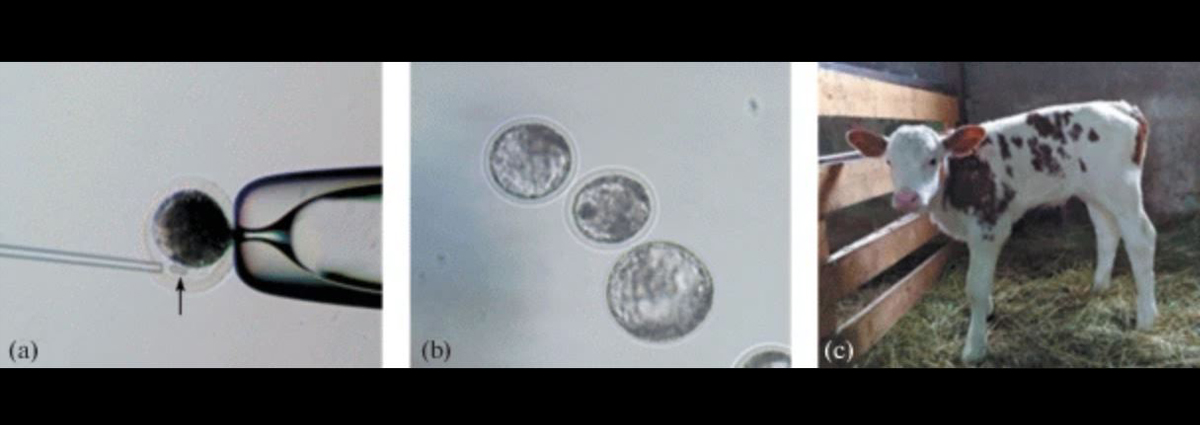
Russia's First Gene-Edited Calf Turns One
July 7, 2021| |
Researchers from the Ernst Federal Science Center for Animal Husbandry, Skolkovo Institute of Science and Technology (Skoltech), Moscow State University, and their colleagues have produced the first viable cloned calf in Russia – and she recently turned one.
The team led by Galina Singina at the Ernst Federal Science Center for Animal Husbandry managed to clone the calf using somatic cell nuclear transfer (SCNT), with embryonic fibroblasts as donors of nuclei. The calf was born on April 10, 2020, with a birth weight of 63 kilograms. She is now an adult animal weighing over 410 kilograms with a regular reproductive cycle. Until she turned one, she was kept in a separate room with her mother, but since May, she has been on daily pasture with the other cows of the Institute.
In a related experiment, the research team was able to knock out the genes responsible for beta-lactoglobulin, a protein causing milk allergy in humans, in the hopes of creating gene-edited cows with hypoallergenic milk. The researchers used CRISPR-Cas9 technology to knock out PAEP and LOC100848610, two genes representing beta-lactoglobulin in the bovine genome, and obtain a line of gene-edited embryonic fibroblasts. Beta-lactoglobulin is not an easy target as there are in fact four copies of the genes in a cow's genome (two of each gene) that need to be inactivated. The team was able to inactivate three out of four.
For more details, read the article on the Skoltech website.
| |
You might also like:
- Study Finds Gene Editing in Cattle Produces No Off-Target Mutagenesis
- UC Davis Scientists Use CRISPR Technology to Develop Bull that Produces 75% Male Offspring
- Hornless Cattle Now Possible Thanks to Genome-editing
Biotech Updates is a weekly newsletter of ISAAA, a not-for-profit organization. It is distributed for free to over 22,000 subscribers worldwide to inform them about the key developments in biosciences, especially in biotechnology. Your support will help us in our mission to feed the world with knowledge. You can help by donating as little as $10.
-
See more articles:
-
News from Around the World
- Can Gene Drive Eliminate Vector-borne Diseases?
- Researchers Combine Resistance Genes to Improve Wheat Yields
- Cow's Gut Microbes Can Degrade Three Types of Plastics
- Drought Tolerant Rice Comparatively Safe With Non-GM Counterpart
- Study Shows Information Beyond Genetic Code is Stored in Plant Sperm
- Wageningen Scientists Discover how Potato Blight Pathogen Penetrates Plants
-
Plant
- Russia's First Gene-Edited Calf Turns One
- Study Reveals Role of OsMTD2 in Rice Pollen Tube Elongation
- Scientist Introduces CRISPR 3.0 System for Highly Efficient Gene Activation in Plants
- Japanese Researchers Develop New Gene-Editing Tool to Create Non-GM Crops
- Scientists Propose Ethical Guidelines to Assess GM, GEd Organisms
-
Health
- Facemask Detects COVID-19 Virus in 90 Minutes
-
Read the latest: - Biotech Updates (December 10, 2025)
- Gene Editing Supplement (November 26, 2025)
- Gene Drive Supplement (February 22, 2023)
-
Subscribe to BU: - Share
- Tweet

